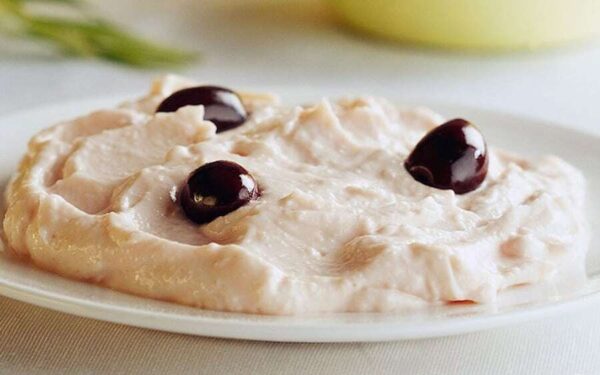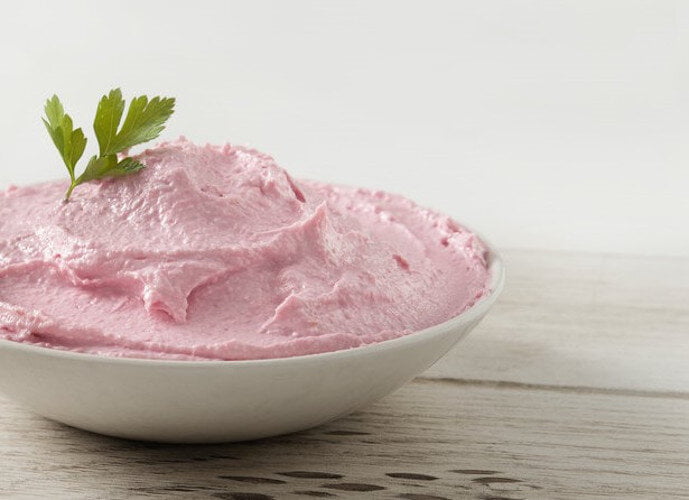Taramosalata stands out as one of the most iconic and cherished spreads in Greek cuisine. With its smooth texture, bright lemon flavour, and subtle hint of the sea, it’s a timeless dish that graces both everyday meals and festive Lenten tables.
What Is Taramosalata
This creamy dip is made from tarama — salted and cured fish roe, typically from cod or carp — combined with bread or boiled potato, olive oil, and lemon juice. In some regional recipes, onion is added to give the mixture a livelier note. When whipped together, the ingredients create a silky, balanced paste with a delicate yet distinctive flavor.
The Two Main Types
Taramas means “salted fish roe” — fish eggs preserved in salt, usually from carp, but also from cod or pike. There are two main types of tarama: white and red. The white variety is considered superior in both quality and flavour, something that’s reflected in its higher price. It produces the white taramosalata, a refined version with a milder, cleaner taste and a velvety texture.
The pink taramosalata, more common and affordable, gets its colour either from beetroot juice or from food colouring. It has a stronger, saltier profile that many people enjoy. Taramosalata itself is a simple yet flavorful spread made by pureeing fish roe with onion, dill, lemon juice, and olive oil. Some variations also include boiled potatoes or soaked bread to give the dip more body and a creamier consistency.
Serving Suggestions
Taramosalata is a classic meze, best enjoyed with slices of bread, warm pita, barley rusks, or crunchy vegetables. It’s a staple of Clean Monday and Lenten menus, as it contains no dairy or eggs. It pairs wonderfully with olives, capers, pickled vegetables, and a chilled glass of ouzo or white wine.
Taramosalata captures the essence of Greek simplicity — transforming a few humble ingredients into a dish that’s wholesome, balanced, and deeply satisfying.





